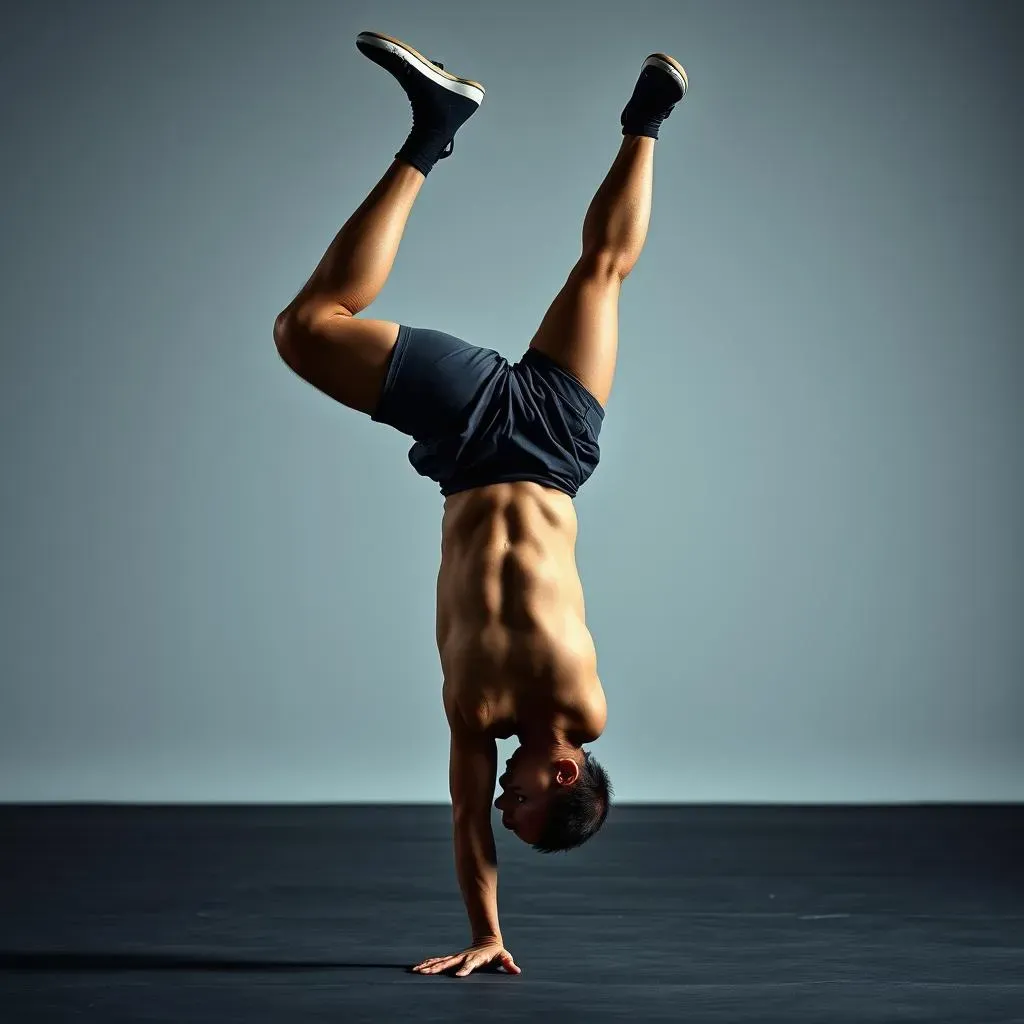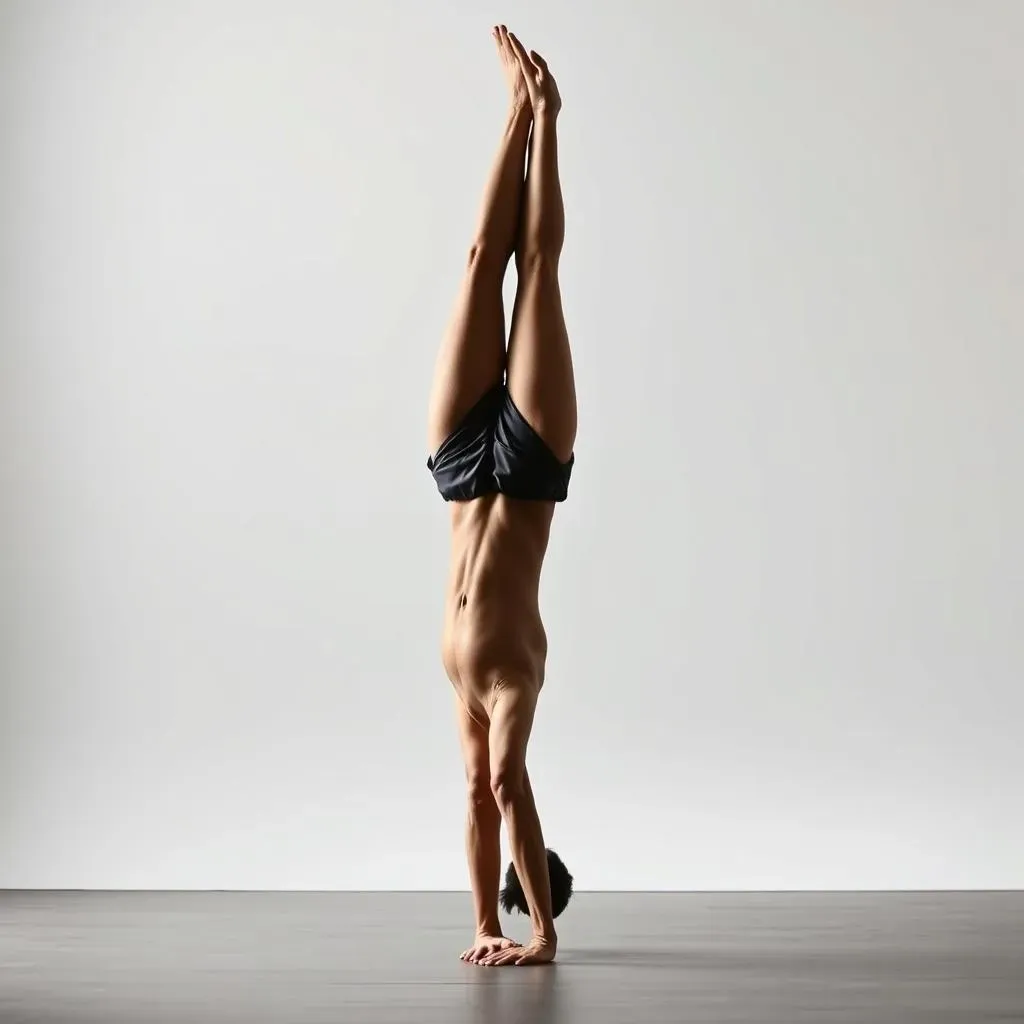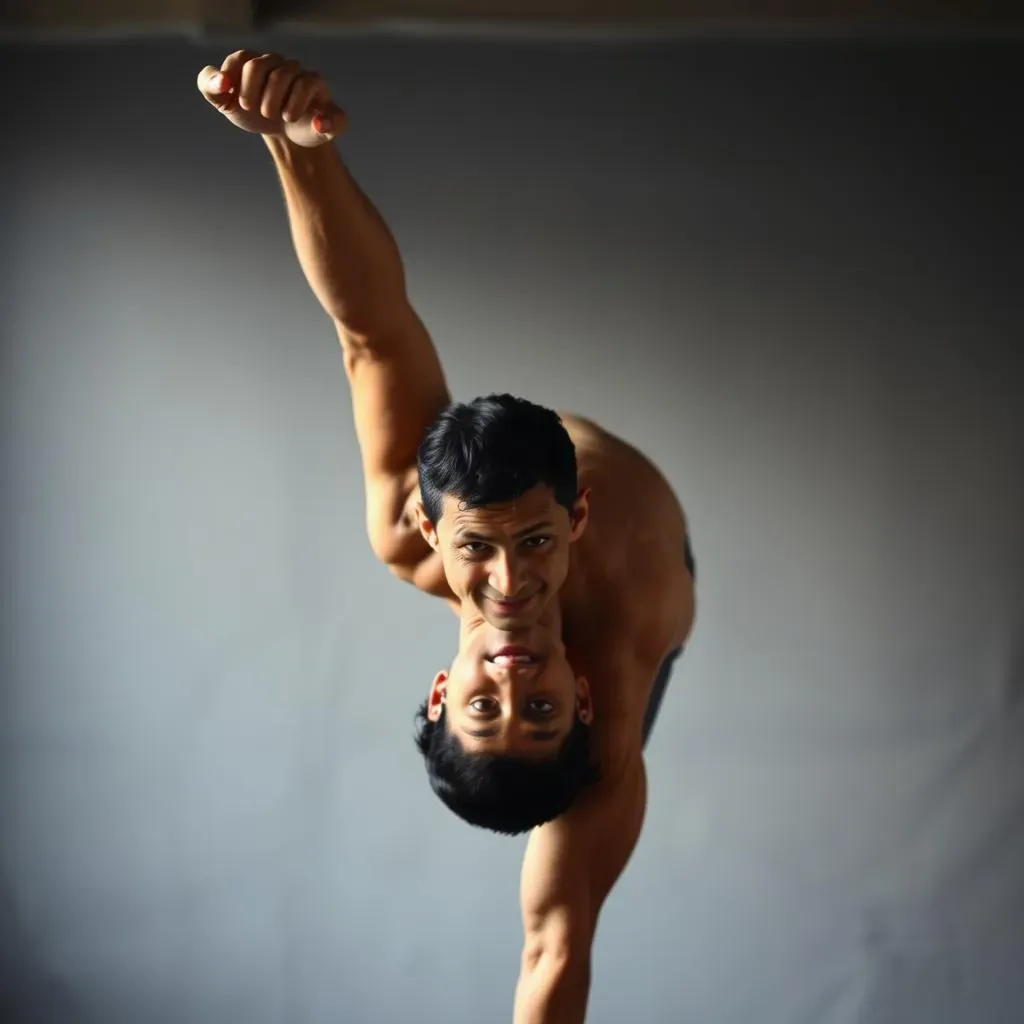Table of Contents
Are you ready to take your fitness journey to new heights? Literally. The calisthenics handstand is an impressive feat of strength, balance, and control that can seem daunting, but with the right approach, anyone can master it. In this comprehensive guide, we'll delve into the world of calisthenics handstand, exploring its benefits, basic techniques, and providing a step-by-step workout routine to help you progress from a beginner to an advanced handstand practitioner. Whether you're looking to improve your overall fitness, build confidence, or simply push your body to new limits, the calisthenics handstand is an exciting and rewarding challenge. So, let's get started on this upside-down journey and discover the incredible benefits of calisthenics handstand training. With patience, persistence, and the right guidance, you'll be defying gravity in no time.
Introduction to Calisthenics Handstand: Understanding the Benefits and Basics

Introduction to Calisthenics Handstand: Understanding the Benefits and Basics
Introduction to Calisthenics Handstand
The calisthenics handstand is a fundamental skill in the world of bodyweight training, requiring a combination of strength, flexibility, and control. For those new to calisthenics, the handstand may seem like an impossible feat, but with dedication and the right training, it can be achieved. Calisthenics handstands offer numerous benefits, including improved upper body strength, increased flexibility, and enhanced overall fitness.
One of the primary advantages of calisthenics handstand training is its ability to build strength in the shoulders, back, and arms. By progressively increasing the duration and difficulty of handstands, individuals can develop the muscular endurance needed to perform more complex calisthenics movements. Additionally, handstands help improve balance and coordination, which are essential for advanced calisthenics techniques.
Benefit | Description |
|---|---|
Improved Strength | Handstands engage the deltoids, trapezius, and rhomboid muscles, leading to increased strength and stability in the upper body. |
Enhanced Flexibility | Regular handstand practice increases flexibility in the shoulders, wrists, and hamstrings, allowing for a greater range of motion. |
Better Balance and Coordination | Handstands require engagement of the core and precise alignment, resulting in improved balance and overall coordination. |
Understanding the Basics of Calisthenics Handstand
Before attempting a calisthenics handstand, it's essential to understand the fundamental principles. A handstand is an inverted position where the body is supported entirely by the hands, with the arms straight and the body in a straight line from head to heels. Proper alignment is crucial to maintain balance and prevent injury.
Beginners should start by practicing against a wall to build confidence and develop the necessary strength. As they progress, they can move away from the wall and focus on free-standing handstands. It's also important to warm up before training and to listen to the body, taking regular breaks to avoid fatigue and prevent injury.
- Start with wall-assisted handstands to build strength and confidence.
- Focus on proper alignment, engaging the core and keeping the body straight.
- Gradually increase the duration of handstands as strength and endurance improve.
Getting Started with Calisthenics Handstand
For those eager to begin their calisthenics handstand journey, it's essential to set realistic goals and celebrate small victories along the way. Start with short sessions against a wall, focusing on proper form and technique. As progress is made, incorporate variations such as one-arm handstands or handstand push-ups to continue challenging the body.
Remember, mastering the calisthenics handstand takes time, patience, and dedication. Stay motivated by tracking progress, seeking guidance from experienced practitioners, and embracing the process of learning and improvement.
Calisthenics Handstand for Beginners: Tips and Tricks to Get You Started

Calisthenics Handstand for Beginners: Tips and Tricks to Get You Started
Embarking on the journey to master the calisthenics handstand can be both thrilling and intimidating for beginners. The key to success lies in gradual progression, patience, and attention to proper technique. As a beginner, it's essential to start with the fundamentals and build a strong foundation before attempting more advanced movements.
One of the most critical aspects of learning handstands is building upper body strength, particularly in the shoulders, back, and arms. Exercises like push-ups, shoulder presses, and rows can help develop the necessary strength. However, it's equally important to focus on flexibility and mobility, especially in the shoulders and wrists, to maintain proper form and prevent injury.
Exercise | Description | Frequency |
|---|---|---|
Push-ups | Strengthens chest, shoulders, and triceps | 3 sets of 10 reps, 3 times a week |
Shoulder Press | Targets deltoids and trapezius muscles | 3 sets of 8 reps, 2 times a week |
Rows | Builds back and arm strength | 3 sets of 12 reps, 2 times a week |
Once you've built a solid foundation of strength and flexibility, it's time to start practicing handstands. Begin by kicking up against a wall, focusing on proper alignment and engaging your core. Start with shorter holds and gradually increase the duration as you build confidence and endurance.
- Start with wall-assisted handstands to build confidence and strength.
- Focus on proper alignment, engaging the core and keeping the body straight.
- Gradually increase the duration of handstands as strength and endurance improve.
As you progress, incorporate variations such as one-arm handstands or handstand push-ups to continue challenging yourself. Remember to listen to your body, taking regular breaks to avoid fatigue and prevent injury. With dedication and the right guidance, you'll be well on your way to mastering the calisthenics handstand.
Calisthenics Handstand Workout Routine: Building Strength and Endurance

Calisthenics Handstand Workout Routine: Building Strength and Endurance
Building a Strong Foundation: Essential Exercises
A well-structured workout routine is crucial for building the strength and endurance needed to master the calisthenics handstand. At the core of any handstand routine are exercises that target the shoulders, back, and arms. These muscle groups are essential for supporting the body's weight and maintaining proper form.
Begin by incorporating exercises like handstand push-ups, inverted rows, and shoulder presses into your routine. Handstand push-ups are particularly effective for building strength in the shoulders and triceps, while inverted rows target the back and arm muscles. Shoulder presses help improve overall shoulder stability and strength.
Exercise | Sets and Reps | Frequency |
|---|---|---|
Handstand Push-ups | 3 sets of 8 reps | 3 times a week |
Inverted Rows | 3 sets of 12 reps | 2 times a week |
Shoulder Presses | 3 sets of 10 reps | 2 times a week |
- Warm up with 10-15 minutes of cardio and dynamic stretching before each workout.
- Focus on proper form and technique over the number of repetitions.
- Gradually increase the intensity and difficulty of exercises as strength improves.
Progressive Training: From Beginner to Advanced
As you build strength and endurance, it's essential to progress your training to continue challenging yourself and avoid plateaus. Start by increasing the duration of your handstands, then move on to more advanced variations such as one-arm handstands, handstand walks, and handstand push-ups.
Remember to always listen to your body and rest when needed. Adequate recovery time is crucial for muscle growth and injury prevention. Stay motivated by celebrating small victories and setting achievable goals.
Variation | Description | Recommended Frequency |
|---|---|---|
One-Arm Handstand | Targets balance and strength, requires precise control. | Practice 2 times a week, starting with shorter holds. |
Handstand Walks | Improves balance and coordination, simulates real-world movements. | Incorporate into your routine 1 time a week, gradually increasing distance. |
Handstand Push-ups | Builds strength and endurance, increases overall upper body power. | Practice 2 times a week, aiming for 3 sets of 10 reps. |
Overcoming Common Challenges in Calisthenics Handstand: Safety Precautions and Injury Prevention

Overcoming Common Challenges in Calisthenics Handstand: Safety Precautions and Injury Prevention
Understanding Common Injuries and Preventive Measures
As with any physical activity, calisthenics handstand training comes with its share of risks and potential injuries. The most common injuries include wrist strains, shoulder impingement, and lower back pain. These can often be prevented by warming up properly, listening to your body, and maintaining proper form.
Warming up before a handstand session is crucial. It prepares the muscles for the upcoming exertion, reducing the risk of strains and pulls. Focus on dynamic stretches for the shoulders, wrists, and hamstrings, as these are the areas most engaged during handstands.
Common Injury | Prevention Strategy | Recovery Tips |
|---|---|---|
Wrist Strains | Warm up with wrist rotations and extensions, use supportive wristbands | Apply ice, rest, and perform gentle stretches |
Shoulder Impingement | Maintain proper shoulder alignment, avoid overtraining | Use a foam roller or massage ball, practice shoulder mobilization exercises |
Lower Back Pain | Engage core, avoid arching or rounding the back | Stretch the hamstrings and hip flexors, strengthen the core |
Safety Precautions for Handstand Training
Safety should always be the top priority when practicing calisthenics handstands. Beginners should start by practicing against a wall to build confidence and strength. As they progress, they can move away from the wall but should always have a spotter or a safe landing area in case of a fall.
It's also important to be mindful of the training environment. Ensure the floor is clear of obstacles, and consider using a mat or crash pad for added protection. Proper equipment, such as handstand blocks or a pull-up bar, can also enhance safety and provide additional support.
- Always warm up before training and cool down afterwards to prevent injuries.
- Practice against a wall or with a spotter until you're confident in your ability to balance.
- Use protective gear such as wristbands and consider a mat or crash pad for safety.
Advanced Calisthenics Handstand Techniques: Taking Your Skills to the Next Level

Advanced Calisthenics Handstand Techniques: Taking Your Skills to the Next Level
Mastering Advanced Calisthenics Handstand Techniques
For those who have mastered the fundamentals of calisthenics handstands, it's time to take their skills to the next level. Advanced techniques not only challenge the practitioner but also offer a new dimension of strength, flexibility, and overall fitness. One of the most impressive advanced techniques is the one-arm handstand. This variation requires immense strength, balance, and control, as the entire body weight is supported by a single arm.
To attempt a one-arm handstand, start by building up your strength with exercises like one-arm push-ups and shoulder rotations. Practice kicking up against a wall, focusing on proper alignment and engagement of the core. Gradually, as confidence and strength improve, move away from the wall and attempt free-standing one-arm handstands.
Technique | Description | Recommended Practice |
|---|---|---|
One-Arm Handstand | Develops balance and strength, increases overall control | Practice 2 times a week, starting with shorter holds |
Handstand Push-ups | Builds upper body strength and endurance | Practice 2 times a week, aiming for 3 sets of 10 reps |
Handstand Walks | Improves balance and coordination, simulates real-world movements | Incorporate into your routine 1 time a week, gradually increasing distance |
Refining Your Technique: Tips for Advanced Practitioners
As you delve into advanced calisthenics handstand techniques, refining your form and technique becomes increasingly important. Focus on maintaining a straight line from head to heels, engaging your core, and keeping your shoulders down and away from your ears. Practice regularly to develop muscle memory and increase your endurance.
Another key aspect of advanced handstand training is incorporating variations that challenge different muscle groups. For example, handstand walks target balance and coordination, while handstand push-ups build strength and endurance. Remember to always warm up and cool down to prevent injuries and promote recovery.
- Focus on proper alignment and engage your core throughout each exercise.
- Incorporate variations to challenge yourself and avoid plateaus.
- Listen to your body and rest when needed to avoid injury.
Conclusion: Standing Tall with Calisthenics Handstand
Mastery of the calisthenics handstand is a journey, not a destination. It requires dedication, persistence, and a willingness to challenge yourself. Through this guide, you've learned the fundamentals of handstand technique, how to build the necessary strength and endurance, and how to overcome common obstacles. Remember, the key to success lies in gradual progression, patience, and practice. As you continue on your calisthenics handstand journey, keep in mind that every small achievement is a step towards your goal. Celebrate your progress, learn from your setbacks, and always keep your eyes on the prize. With consistent effort, you'll be performing handstands like a pro, and the sense of accomplishment will be unparalleled. So, go ahead, flip your perspective, and experience the transformative power of calisthenics handstand training.
